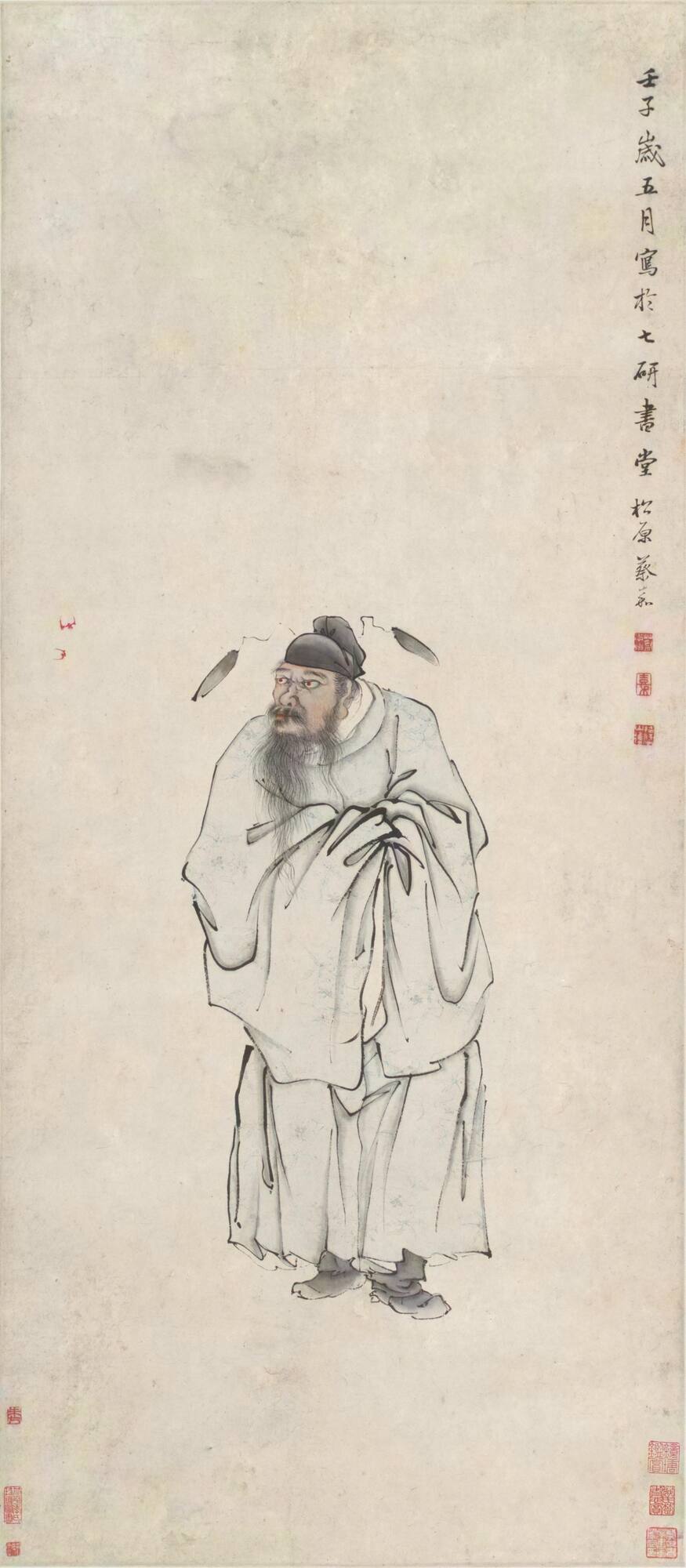
Object Details
Artist
Cai Jia
Date
1732
Medium
Hanging scroll: ink and colors on paper
Dimensions
41 1/4 x 24 inches (104.8 x 61 cm)
Credit Line
Acquired through the generosity of Judith Stoikov, Class of 1963
Object
Number
99.048
Pictures of Zhong Kui, the Demon Queller who eradicates evil spirits, are traditionally hung in door(…)
Pictures of Zhong Kui, the Demon Queller who eradicates evil spirits, are traditionally hung in doorways around the time of the Lunar New Year, or on the fifth day of the fifth month (Double Five Festival). Zhong Kui’s exploits against demons pave the way for the arrival of good fortune. The two tiny red bats symbolize the arrival of happiness, since the Chinese words for red bat (hong fu) and abundant happiness (hong fu) are homonyms. The two red bats also draw attention to Zhong Kui’s bloodshot eyes.Cai Jia, an accomplished professional painter, lived in Yangzhou, Jiangsu province. He excelled in flower and bird painting as well as the so-called “blue-and-green” landscape painting. His figure painting as shown in Zhong Kui and Bats also reached a vivid and expressive depiction. The collectors’ seals show that this painting was once owned by Wang Yangdu, a well-known collector of the nineteenth century, and was later collected by Di Pingzi and Qian Jingtang, two major collectors of the early twentieth century. (“Tradition, Transmission, and Transformation in East Asian Art,” curated by Cornell PhD student Yuhua Ding under the supervision of Ellen Avril and presented at the Johnson Museum January 23-June 12, 2016)












